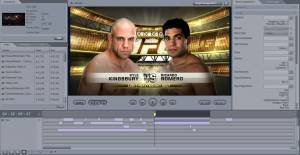For multiplatform distribution, creativity trumps technology
Levels Beyond, a Denver-based company formed in 2007 to “disrupt the status quo” in digital file management and delivery, thinks technology is only part of the solution to revenue-generating multiplatform distribution. Creativity and offering unique content packages, it says, is most important to distinguishing a video/TV service in today’s highly competitive landscape.
“What we’re finding is that designing and deploying multiplatform distribution architectures is not so much a technology challenge but a business model issue, where you have to figure out how best to give subscribers of your service what they want when they want it,” said Danny Gold, executive vice president of strategy & solutions at Levels Beyond and one of its co-founders. “We tell clients, ‘Stop worrying about the technology, and be more creative with your services.’ Companies like ours can figure out how to deploy it in the most cost-effective way.”

That technology Gold is referring to includes the company’s Reach Engine platform, which focuses on the business case scenarios of a media organization and what happens to files once they are ingested onto the network. One of the ideas behind the Reach Engine is to eliminate the “middle man” costs of file delivery services that distribute commercials and syndicated programming to stations and large production facilities in digital form.
Its Reach Engine networked platform and Web-based interfaces help automate all of the various processes related to creating content and getting it into the hands of consumers in the fastest and most efficient way. They are uniquely focused on large content libraries and offering the ability to track the entire lifecycle of a piece of content, right down to which NLE or camera was used to create the original rough-cut.
“It’s that powerful,” Gold said. “One of our value-adds is that we’re not systems integrators. We’re going to share ideas and help clients reach their financial goals. We’re empowering marketing departments to not have to wait for content. They can go get it themselves. They can also track the content even after it has left the production environment.”

Indeed, the Reach Engine Studio software package, sold as seat licenses, lets users ingest media, create clips from raw materials, send those clips directly to a nonlinear editing system (Avid Media Composer, Apple's FCP, Adobe Systems' Premiere, or via straight XML), import and modify rough cut timelines, and export final outputs through the Reach Engine's web-based interface. Converting existing workflows and prior asset management solutions into Reach Engine Studio is easy. With file/folder scanners, Reach Engine can recognize materials already captured and catalog those materials in place. It also supports collaborative workflows via a built-in "check-in/check-out" and versioning system, and assets are easy to track throughout the system.
“Everyone is now doing it themselves, or wants to be doing it in order to have more control and save on operational costs,” Gold said. “The biggest change in the industry in the past few years has been speed. Everything, from video creation to distribution and fulfillment, has to happen quicker in order to support the new demands. We’ve seen a lot more people migrate to file-based workflows, and they are now trying new things because they feel confident to do so.”
The professional video industry's #1 source for news, trends and product and tech information. Sign up below.
Automating most of the manual processes is key to increased productivity, fast turnaround times and financially successful multiplatform delivery, Gold said. Levels Beyond wants to remove the human element wherever possible to make clients like ABC/Disney, Comcast, Warner Brothers and other retail brands (Hallmark and Ultimate Fighting Championship) more productive. The company offers an API that lets clients license front-end interfaces for things like a shopping cart. To date, clients have used it internally in a B2B fashion to share content related to promos and other types of short form programming.
Levels Beyond’s strategy is to look past installing a MAM system because it only helps you get content in, organize it, and then search and retrieve it.
“I don't think it actually helps you do anything with the content and how you monetize it. We’re focused on the repurposing and flow of content into and out of a facility,” Gold said. “Our users are marketing and sales departments, promotions and other things that help support a company’s bottom line."
Gold continued, “Everyone has huge pain points that we design solutions for and make it easy to accomplish. We insulate them from many of the tools — ingest, trasncoding, file transfers, etc. — so they can focus on creativity. This helps clients grow their business in many different ways. Again, it’s not about technology for technology’s sake. It’s so much more. Media people have to understand that as the first step towards successful implementation.”

Levels Beyond offers an API that lets clients license and develop custom front-end interfaces for things like an online shopping cart. To date, clients have used it internally in a B2B fashion to share content related to promos and other types of short form programming.
“Editors and other content creators then become fulfillment centers, filling requests for content,” Gold said. “The Reach Engine interface that sits on top of a media company’s library automatically provides access rights and content security. You can open that up to the public if you want to (like selling B-roll or outtakes of TV shows or live sporting events). Sports is a great application for this type of alternate content that can have value, although it might be obvious initially.”
One of the biggest challenges to broadcasters today is non-traditional media companies like Netflix creating its own programming (“House of Cards”) and bypassing the typical broadcast station infrastructure. Original content, in all of its forms, is more important than ever before. Those that own the content will ultimately win, Gold said.
“We think content has taken on an even larger role than it has in the past, in terms of value to a company's bottom line,” Gold said. “That’s why file management and organization are very important. It’s all about the database. We’re cutting out the legacy silos that have been put in place over the years and bringing everything under one platform. This way, the data flows more freely, and you can create new and interesting programming packages that will appeal to consumers. We don’t know what the next big things is going to be, but if you cut out the middle men, then between the advertisers, consumers and content creators and owners, almost anybody can develop a new experience that will be attractive to consumers. For our clients, that’s what it’s all about.”
